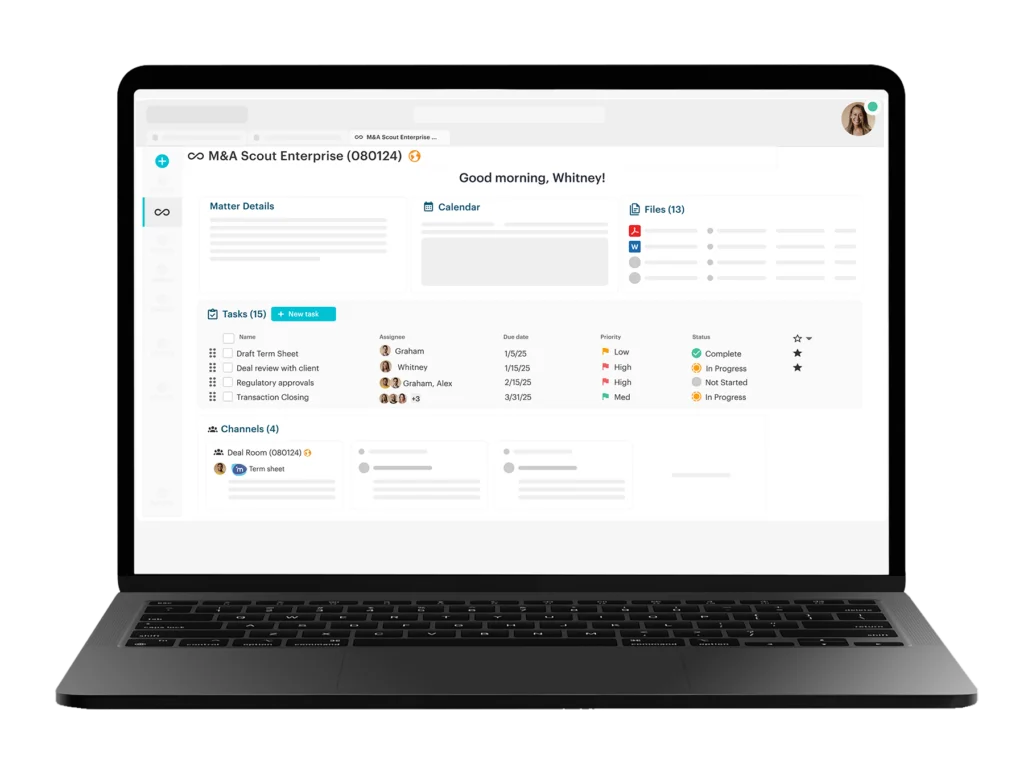What Is Workstream Collaboration?
It used to be that a workplace consisted of offices, desks, and colleagues you saw face-to-face on a daily basis. Now, we’re in a technology-enabled era where the ping of a messaging app is the new company memo, videoconferencing is the new watercooler, and your closest colleague could be halfway around the world. 70% of the global workforce is working remotely at least once a week, and there are multifunctional teams to run and global clients to serve.
So what does that mean for actually getting things done?
It means that along with the advantages of being able to connect anytime and anywhere, we also face the challenge of collaborating effectively across different time zones, making sure critical information is seen by those who matter, and trying to get meaningful work done amidst the digital distractions that come with a constant stream of notifications.
That’s why an entire cottage industry of tools has popped up to help connect us – everything from messaging to social networking apps. But as businesses and workers deploy platform after platform, many are finding that can lead to disjointed work streams, shadow technology that compromises client and company privacy, and files that always seem to be in one place and not the other.
The answer to these challenges? Workstream collaboration.
Understanding Workstream Collaboration
The term “workstream collaboration” didn’t even exist a few years ago. Fast forward to today, and this emerging category of tools has leading organizations jumping on board and getting more done, more effectively, in less time.
According to Gartner, workstream collaboration “is a market of products used to organize, coordinate and execute on projects or processes where a high level of teamwork is needed to deliver effective results.” These platforms combine mobile messaging, social networking, and unified communications to create a more powerful and seamless collaboration experience. Workstream collaboration vendors understand the importance of team conversations occurring in the context of the work itself. Unlike earlier iterations of productivity tools, workstream collaboration platforms are focused around specific topics and projects, allowing employees to communicate about work and actually get work done in the same place.
And it’s catching on fast. The workstream collaboration market is predicted to reach $4.9 billion by 2021, and 70% of teams will primarily rely on workstream collaboration tools to get their work done by 2022.
How Workstream Collaboration Can Benefit Your Business
Simply put, effective collaboration makes teams run – especially as they become bigger, more diverse and geographically dispersed. By bringing all projects, tools and communications into one central hub, your business can:
Gain hours back every day.
The average worker uses nearly 10 apps, and 43% believe that they have to switch between too many tools just to get basic work done. In addition, 67% believe it would be easier to focus on work if important information from all of their apps appeared in a single window. Workstorm brings all your tools into a single dashboard, so you can spend your day on the tasks that matter – not getting whiplash moving from platform to platform. An added bonus? Putting the tools your workers need at their fingertips can help drive higher engagement and retention.
Put email in its place.
Email is still a critical part of business communication, but never-ending email chains aren’t productive. According to a McKinsey analysis, the average professional spends 28% of the work day reading and answering emails. For the average full-time worker in America, that amounts to an incredible 2.6 hours spent and 120 messages received per day.
With workstream collaboration, tools like email and messaging happily coexist side by side. That means you can banish those “OK, thanks” emails among colleagues by sending secure messages internally, while continuing to use email for more formal client communications without leaving the platform. Workstorm offers deep email integrations directly in the platform, helping you improve worker productivity by 30%.
Protect privacy and confidentiality.
Instead of having employees go rogue with their own tools, workstream collaboration ensures sensitive client and company information is housed and shared in one secure place. And while other platforms make you take extra steps to ensure private data stays that way, privacy is built right in with Workstorm – protecting your company and your clients. We care as much about privacy as our clients do, which is why we’ve built the platform with enterprise-grade encryption, customizable configurations to meet business confidentiality requirements, and analytics to ensure users comply with security policies.
Do the work you’re meant to do.
When you can organize work intuitively around projects and topics, you can spend time on what really matters. By staying ahead of the tech curve, you can not only attract fresh new talent to your firm, but also gain a competitive advantage. A Gartner study of 3,210 workers in seven countries concluded that the ability to work anywhere with team collaboration leads to better business outcomes.
A Better Workstream with Workstorm
At Workstorm, we’ve been a part of the workstream collaboration space since before it was even an industry. Our platform is built to deliver the privacy and confidentiality that you and your clients need. As a result, work isn’t just more efficient; it’s also scalable, controllable and secure.
While technology trends come and go, workstream collaboration is an innovation whose time has come. By leveraging tools that reduce complexity, not add to it, you can set your employees and your business up for long-term success – and that’s worth investing in.



